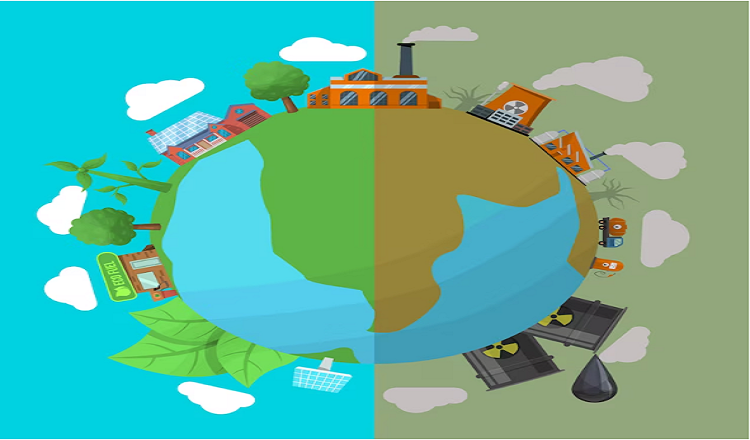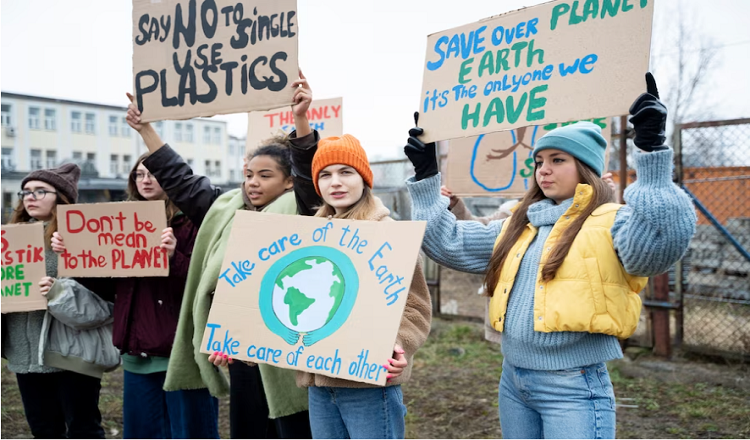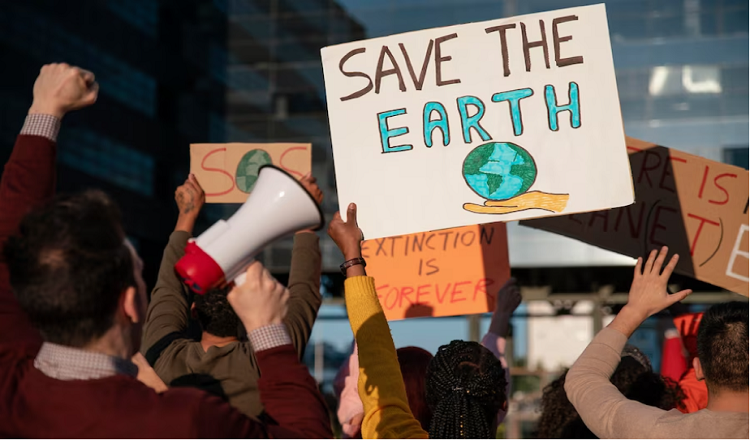The US Transportation and Climate Change Examining Efforts to Reduce Emissions and Promote Sustainable Transportation
One of the most important global challenges of our time is climate change, and transportation plays a big role in this issue. The need for transportation keeps rising as we progress toward a more connected world, which causes a rise in greenhouse gas emissions. The need to solve this issue has never been more pressing, and the United States is no different. In this post, we’ll look at the initiatives being made in the US to lessen transportation emissions and encourage environmentally friendly transportation.
One of the most important aspects of battling climate change is sustainable transportation. The US’s largest source of greenhouse gas emissions, transportation is responsible for nearly 29% of all greenhouse gas emissions. Increased frequency of natural disasters, harsh weather conditions, and rising temperatures are all effects of these emissions that are felt on a global scale.
However, we can lessen these effects and move toward a cleaner, more sustainable future by cutting transportation emissions and encouraging sustainable transportation. We will investigate the challenges and success stories of promoting sustainable transportation in this post as we dig deeper into the condition of transportation emissions in the US today. We will also review the actions being made to reduce these emissions. So fasten your seatbelts and follow along as we investigate the connection between transportation and climate change.
The overall picture of transportation and climate change
In the US, transportation contributes significantly to greenhouse gas emissions, making up around 29% of all emissions in 2019. This covers emissions from vehicles such as cars, vans, buses, trains, and airplanes. Carbon dioxide, methane, and other gases are released when fossil fuels are burned for transportation. These gases trap heat in the atmosphere, causing global warming and climate change.
In addition to increased coastal highway and bridge erosion and floods, more frequent and severe weather events that interrupt transportation networks, as well as damage to airports and other transportation facilities, are some of the effects of climate change on transportation infrastructure and systems. To lessen the effects of climate change and create a more resilient transportation system, it is essential to address transportation emissions and promote sustainable transportation.
Federal Projects and Policies
To cut emissions from transportation and promote environmentally friendly transportation, the federal government has put in place a number of projects and policies. The Environmental Protection Agency must establish emission limits for cars and other vehicles in accordance with the Clean Air Act, which governs air pollution. A cap-and-invest program will be used by the Northeastern and Mid-Atlantic states as part of the Transportation Climate Initiative to cut down on transportation-related emissions.
The Corporate Average Fuel Economy guidelines set goals for the typical fuel economy of new vehicles and trucks sold in the US by the National Highway Traffic Safety Administration. There is still room for improvement, and more aggressive action is required to accomplish climate targets even if these regulations have had some success in lowering emissions and supporting sustainable mobility.
Local and state activities
Through a variety of regulations and programs, several governments and localities have taken the initiative to address transportation emissions and promote sustainable transportation. Many states have set state-level greenhouse gas reduction goals, such as California’s ambition of becoming carbon neutral by 2045. To promote the purchase of electric and other low-emission vehicles, clean vehicle incentives have been put in place, such as tax credits and rebates.
Investments in public transportation, such as growing the rail and bus networks, adding bike lanes, and designing pedestrian- and bicyclist-friendly streets, also aid in lowering emissions. Successful initiatives or policies include New York City’s Vision Zero campaign, which seeks to end traffic fatalities through smarter street design, and Oregon’s Clean Fuels Program, which mandates a steady reduction in the carbon intensity of transportation fuels.
Technological innovations and advancements
Potential solutions to lower transportation emissions and improve sustainability are provided by technological innovations and advancements. Vehicles powered by electricity or hydrogen fuel cells have no emissions and are getting more and more affordable. Due to their ability to optimize driving routes and decrease idle time, autonomous cars have the potential to reduce traffic and increase fuel efficiency.
Data and technology are used by smart transportation systems to enhance traffic flow and lower emissions from idle vehicles. Despite the potential of these technologies, there remain barriers to their general adoption, such as high costs, a lack of adequate infrastructure for fuelling or charging, and potential safety issues with autonomous vehicles. But additional study and advancement in these fields might hasten the switch to a more environmentally friendly transportation system.
Obstacles and difficulties
There are many obstacles and problems in the way of reducing transportation emissions and promoting sustainable mobility. Progress can be hampered by political opposition, such as a reluctance to implement regulations that raise prices for consumers or business. Infrastructure restrictions, such as inadequate infrastructure for refilling or charging electric or hydrogen vehicles, present additional difficulties. Progress can also be hampered by societal attitudes and actions, such as a preference for private vehicles over public transportation or bicycles.
Incentives for businesses and people to adopt sustainable transportation options, education and outreach initiatives to alter public perceptions, and investments in infrastructure improvements to support new technologies and modes of transportation are some strategies for overcoming these difficulties. Progress will also depend on political collaboration and leadership at all levels of government.
Conclusion
Efforts to cut emissions and promote sustainable transportation are essential for reducing the effects of climate change and creating a more resilient transportation system. Transportation is a significant contributor to greenhouse gas emissions and climate change in the US. Achieving this aim requires a combination of state and local activities, federal laws and programs, technology innovations and advancements, as well as overcoming obstacles.
Individuals can choose to walk, bike, or use public transportation instead of driving to minimize transportation emissions, while corporations can embrace electric vehicle fleets or provide incentives for their staff to use sustainable mobility methods. Governments have a number of alternatives for promoting sustainable mobility, including funding public transportation, enhancing infrastructure for electric and hydrogen vehicles, and enacting legislation.
Overall, it is evident that combating climate change and building a more sustainable future depend on increasing sustainable mobility and lowering transportation emissions. We can significantly advance toward a more sustainable transportation system and a healthier planet by taking action at all levels.
Read More You May Like:














Post Comment